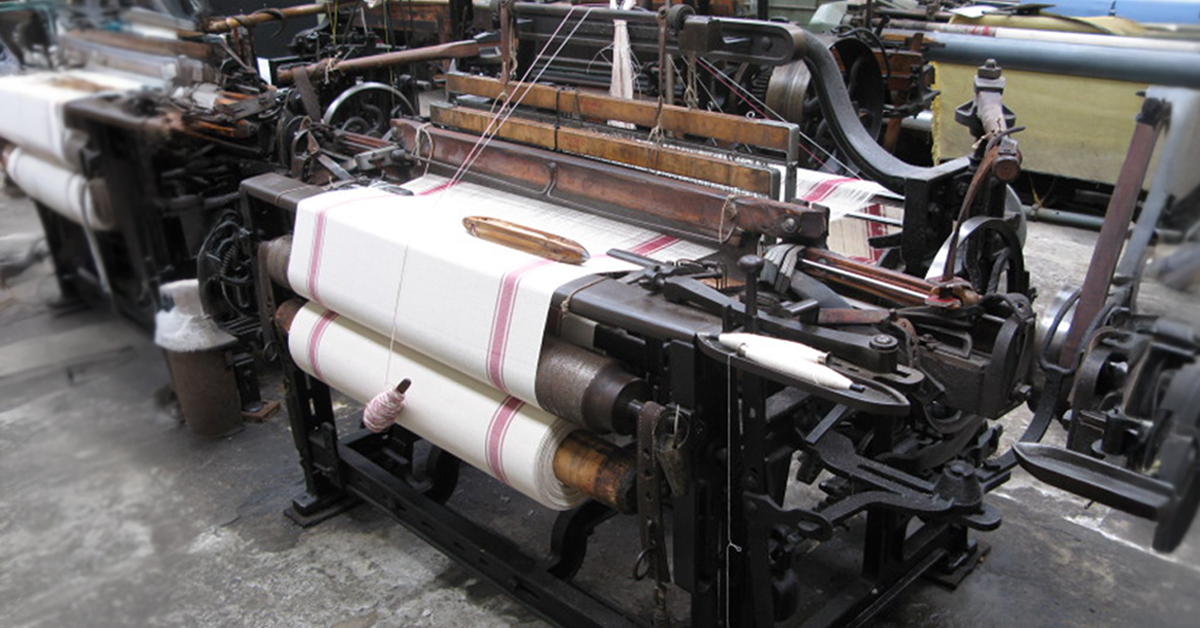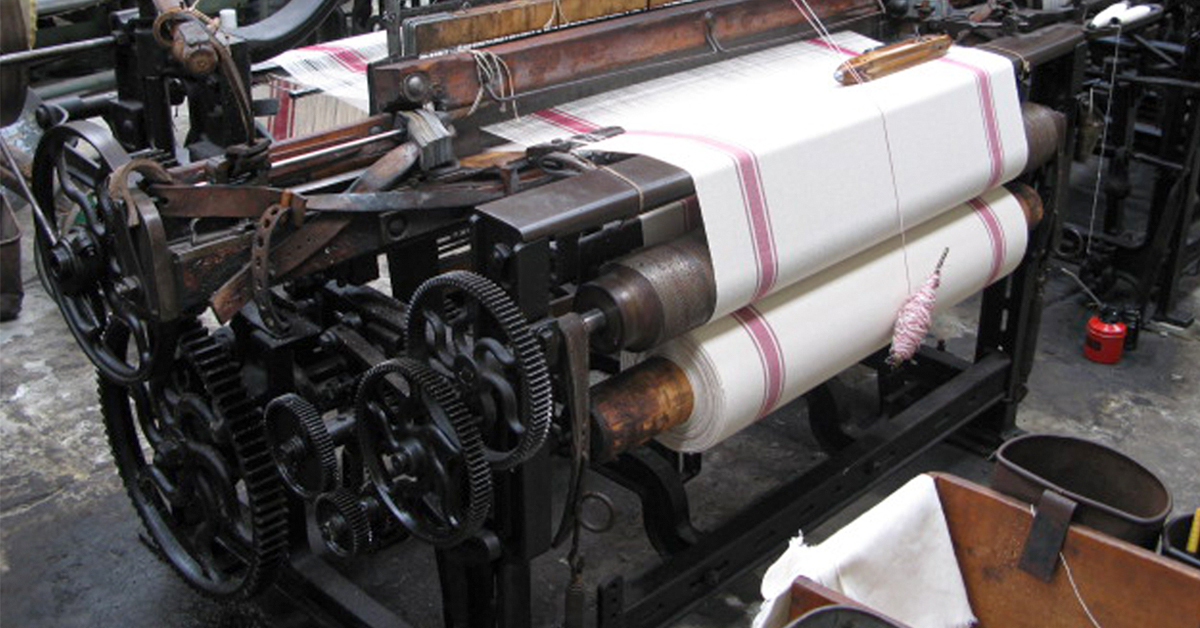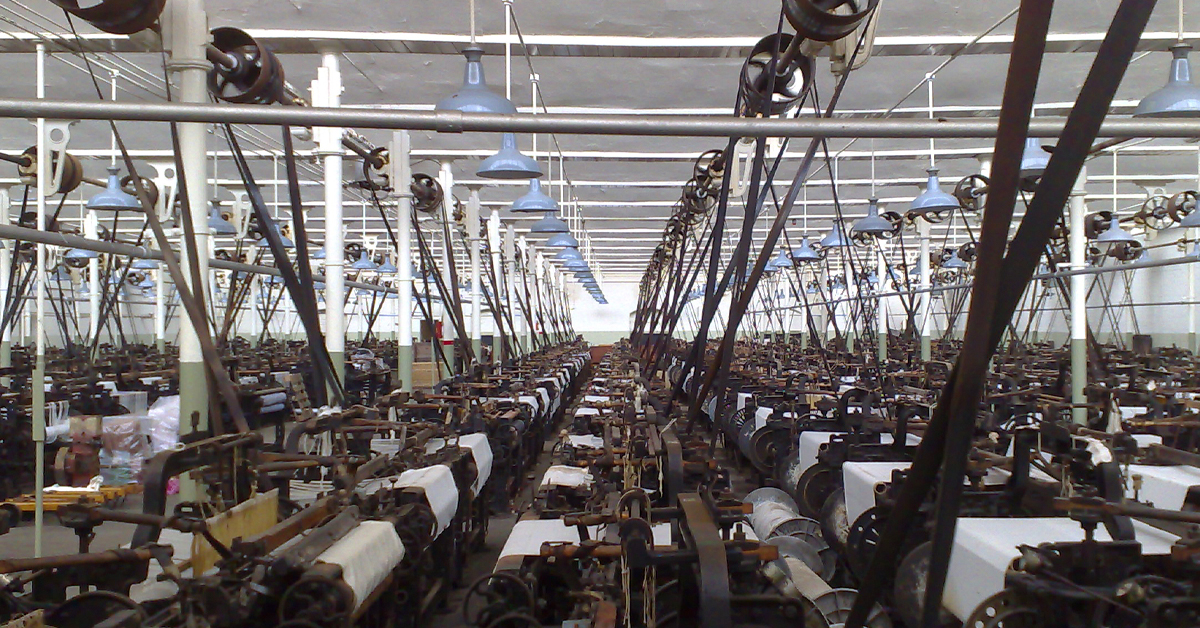Lancashire Loom
Description
The Lancashire loom patented by Kenworthy & Bullough in 1848 was the culmination of sixty years of development following the first power loom patent taken out by Edmund Cartwright in 1785. It became the standard machine for weaving in Lancashire and versions of the loom were made by every textile machine manufacturer right up to the second world war.
Essentially Cartwright, with some ingenious modifications, had managed to apply power to a hand loom. However, his innovation had not been able to increase the speed of weaving significantly or make it possible for one weaver to operate multiple looms, so his power loom had no real advantage over the hand loom.
In 1822 Richard Roberts, a machine tool engineer, designed a loom from cast iron which was very strong and able to operate at high speed. His innovation also included a geared take-up wheel and tappets to operate multiple healds which automated the weaving process, although still required manual adjustment from the weaver while operating. The power loom now had advantage over the handloom and was resisted by skilled handloom weavers. This culminated in the power loom riots of 1826 where over four days across East Lancashire over a thousand power looms were destroyed.
The truly self-acting power loom was only achieved when John Bullough, a weaver from Westhoughton, working with William Kenworthy, a loom maker from Blackburn, applied their ideas to the design. An improved automatic weft stopping motion and a new roller temple meant that the only intervention required from the weaver was refilling the weft pirns in the shuttle. On a Cartwright loom, one weaver could work one loom at 120-130 picks per minute: using the Lancashire loom, one weaver could work four looms at 220-260 picks per minute, thus giving eight times more productivity.
On display
50 Objects Exhibition at Helmshore Mills Textile Museum 6 June - 31 October 2025. Search www.lancashire.gov.uk for Helmshore Mill opening times.



